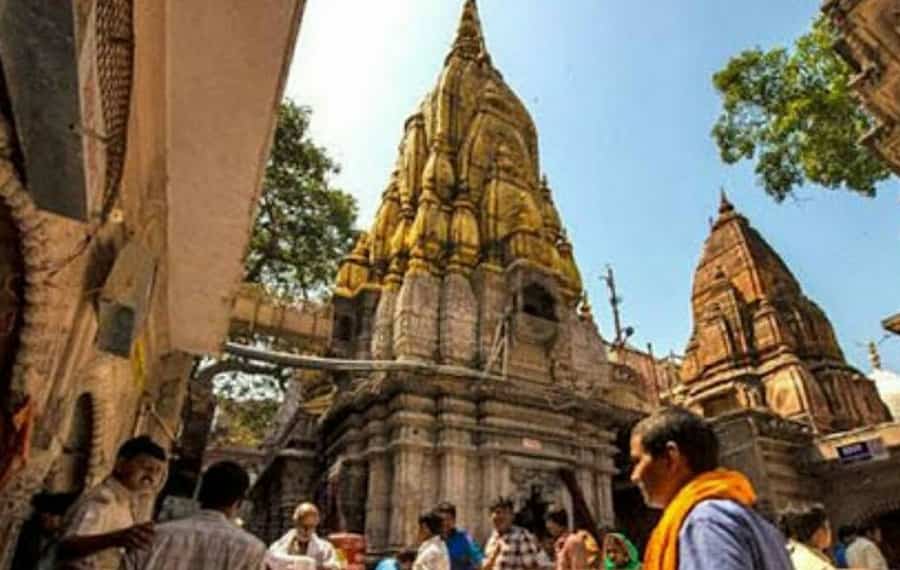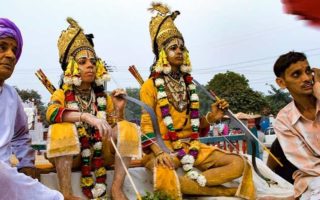Varanasi has revealed its identity across the globe for the Ghats located at every corner of the city, and unquestionably, it is true. There are nearly 100 Ghats, and each one has its own story of construction. Most of the Ghats were built during the time of the Marathas. A series of Ghats are associated with mythological concepts, some are privately owned, but every Ghat is associated with a holy dip in the Ganga. The inner Ghats are located within the 7 km arc of the Ganges riverbank, between the confluence of the Asi River in the south and Varuna in the north. There is a special embankment, a wide stone pathway that leads down to the river, where people take a holy dip. It’s believed in Hindu Puranas that a single dip in the Ganges opens the doors of heaven by pardoning all sins.
Every Varanasi Ghat has its specific significance. Simply taking a bath at the Ghats is not the sole reason for visiting. The sunrise view from a boat is a mesmerizing experience that every visitor should feel because the natural vibrations of the Sun and the Ganges can only be felt through the senses and cannot be described in words. The panoramic view of nature dispels all distractions from the mind and offers positive vibrations, accompanied by the cascading waters of the Ganges and the rising sun.
An evening walk along the Ghat, where the layers of stone steps meet the river, brings inherent pleasure. People also visit the Ghats to consult astrologers, showing their palms and foreheads, and some simply gaze for hours at the flowing Ganges. Many Ghats are associated with specific deities, while others are primarily used for bathing. Some of the most popular Ghats of Varanasi include Dashashwamedh, Assi, Manikarnika, Tulsi, Panchganga, Kedar, Mansarovar, Someshwara, Brahma, Durga, Maha Maya, Ganga Mahal, Janki, Maha Mandir, Narad, and Ram Ghat.
Almost every Ghat is located by the riverbank and near an associated temple. For example, Rama Ghat is dedicated to Lord Rama and is located on the eastern side of the Ganges, near Rameshwar Temple. Tulsi Ghat is dedicated to the saint Tulsidas, who wrote the spiritual book Ram Charit Manas. Man-Mandir, built in 1770 by the emperor of Jaipur, and Lalita Ghat, built by the king of Nepal at the site of Keshav temple, are also prominent. Dashashwamedh Ghat is situated near the Vishwanath Temple and is one of the most popular Ghats of Varanasi. Among all the spiritual cities across the country, none have more Ghats than Varanasi.
Dashashwamedh Ghat
- Location: Near Vishwanath Temple, Varanasi
- Timings: Open all day; Aarti in the evening (around 6:30 PM)
- Famous For: Ganga Aarti, mythological significance (Lord Brahma’s sacrifice), bustling atmosphere
- Places to visit nearby: Vishwanath Temple, Kashi Vishwanath Corridor, Manikarnika Ghat
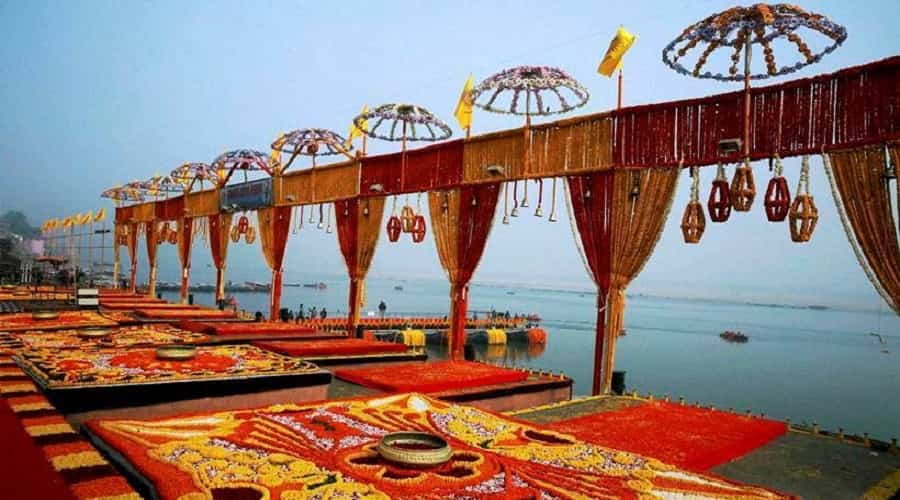
Dashashwamedh Ghat is one of the most popular Ghats in Varanasi, as it is the place where Lord Brahma sacrificed ten horses in a chariot to celebrate the return of Lord Shiva. Numerous Sadhus can be seen here performing their religious rituals. Dashashwamedh Ghat offers a stunning and colorful riverfront view, which should not be missed during a visit to Varanasi, as you will regret missing such a beautiful natural sight. Every evening, an Aarti takes place, where thousands of lamps spread their dim light, creating a divine atmosphere at dusk. Dashashwamedh is the oldest Ghat in Varanasi and serves as a bustling hub for pilgrims. Every day, numerous priests and pilgrims, called pandas or Purohits, take the Sankalp (pledge) on their wooden chaukies under bamboo umbrellas. To perform their Sankalp ceremony, they charge a fee called Dakshina, and people also offer cows to traditional Brahmins.
Devotees take a dip in the Ganges, and after the holy dip, priests apply a red tilak on the forehead of the bather before the final Aarti. It is the second Ghat in the Panch Tirth Yatra if you start your journey from Assi Ghat to the northern region. During the rainy season, when the Ganges reaches its full spate, people visit Dashashwamedh Ghat by boat. The place is easily recognizable due to the crowd of Brahmins, making it one of the most distinct features of the Varanasi Ghats. The natural incidents happening at this Ghat, under the divine presence of the Ganges, give the place a film-like quality. This Ghat is a favorite destination for foreigners who come to capture the natural beauty of Varanasi in photographs.
Harishchandra Ghat
- Location: South of Manikarnika Ghat, Varanasi
- Timings: Open 24 hours; Cremation ceremonies throughout the day
- Famous For: Cremation ground, King Harishchandra’s mythological connection, electric cremation facilities
- Places to visit nearby: Manikarnika Ghat, Rishipurna Ghat, Kal Bhairav Temple
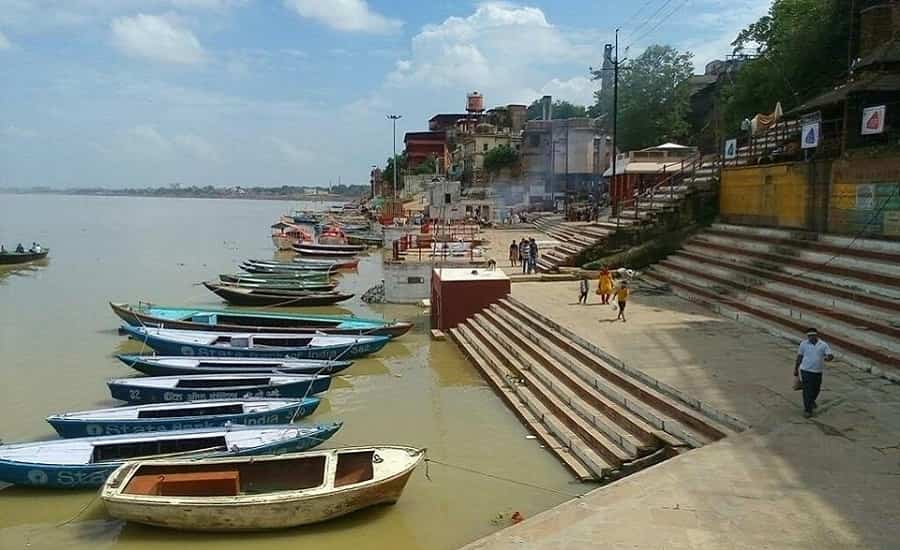
Harishchandra Ghat is named after the famous mythological king Harishchandra, known for his truthfulness. It is believed that he never cheated anyone and served humanity. His devotion to truth is a central part of his story, and even in the Puranas, it is written that God rewarded his son for his truthfulness, kindness, and charity. Harishchandra Ghat is one of the main cremation grounds of Varanasi, along with Manikarnika Ghat. Every day, numerous Hindus bring the bodies of their deceased relatives for cremation at this Ghat.
This Ghat was constructed in the 1980s, and at that time, electric cremation was introduced here. According to Hindu beliefs, those whose bodies are cremated at Harishchandra Ghat attain Moksha and are freed from the cycle of birth. The Ghat is famous for the story of King Harishchandra, who never turned away a guest and devoted himself to truth. Lord Brahma, impressed by his dedication, offered to return his kingdom and his son, but Harishchandra refused the offer, staying true to his principles. His devotion led to his kingdom and son’s return, and the Ghat was named after him to honor his unwavering commitment to truth.
Manikarnika Ghat
- Location: Near the center of Varanasi, on the banks of the Ganges
- Timings: Open 24 hours; Cremation ceremonies throughout the day
- Famous For: One of the holiest cremation Ghats, mythological connection with Lord Vishnu and Lord Shiva, Moksha
- Places to visit nearby: Kashi Vishwanath Temple, Sankat Mochan Hanuman Temple, Gyanvapi Mosque
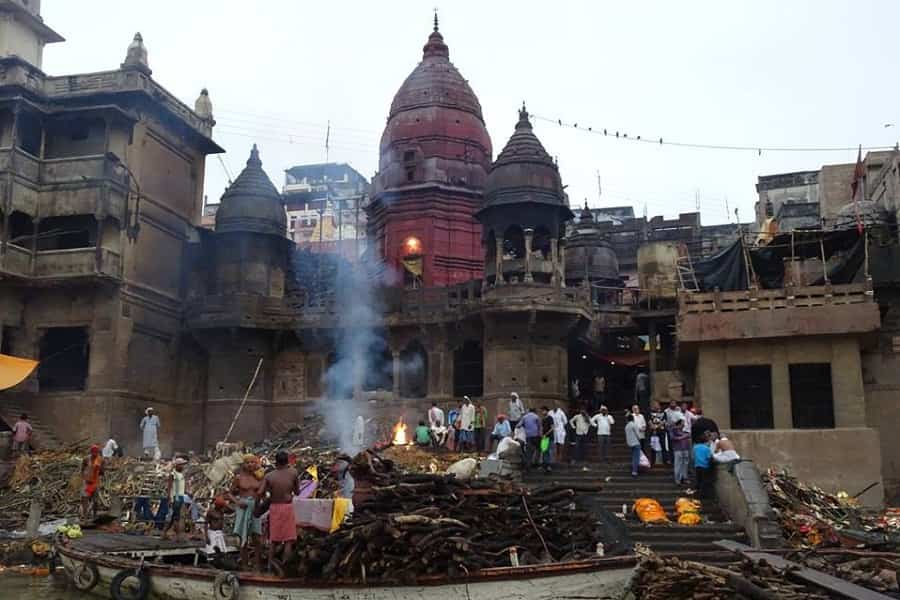
According to Hindu mythology, Manikarnika Ghat is one of the most revered places for cremation, where it is believed that people attain Moksha, meaning they are freed from the cycle of birth and death. The myth behind its creation is that Lord Vishnu performed Tapasya (a meditation) to please Lord Shiva. To save Kashi from Shiva’s destruction, Vishnu convinced Shiva not to destroy the world. Pleased with Vishnu’s efforts, Shiva placed his feet on Kashi, along with Goddess Parvati, and granted Vishnu’s wish. During this event, a precious jewel (Mani) fell into the water, and from then on, the Ghat has been known as Manikarnika.
Since it was created by Lord Shiva, this Ghat is considered auspicious for cremation, and it is believed that those cremated here are blessed by Shiva and attain Moksha. This Ghat symbolizes both creation and destruction, and at Manikarnika, human bodies are consigned to flames, while the soul embarks on its final journey. People from all over the country come here when their loved ones pass away, seeking blessings for their souls.
Tulsi Ghat
- Location: Southern part of Varanasi, near Assi Ghat
- Timings: Open all day
- Famous For: Association with Tulsidas and Ramcharitmanas, healing powers (for skin diseases)
- Places to visit nearby: Tulsidas Temple, Lolark Kund, Assi Ghat
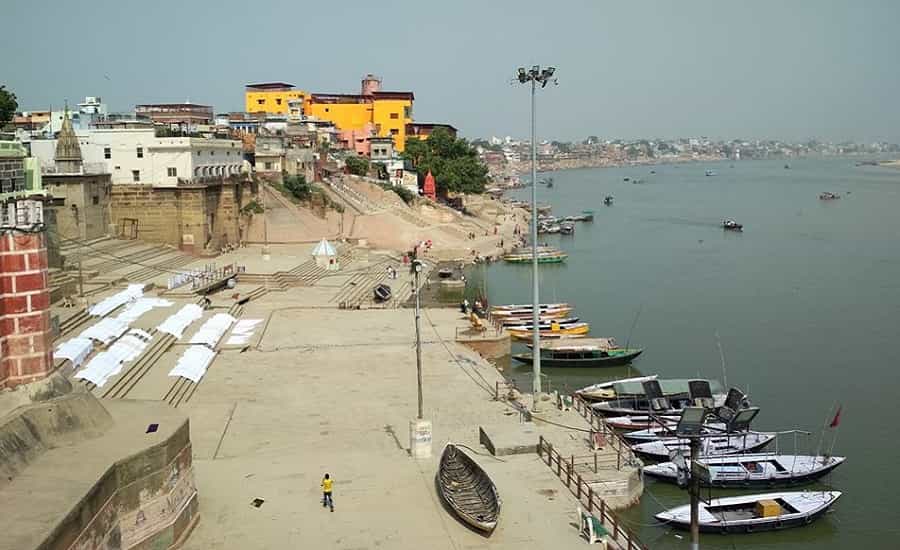
Tulsi Ghat is one of the prominent Ghats of Varanasi. It is the place where the saint Tulsidas wrote the Hindu spiritual and religious epic Ramcharitmanas. The infrastructure at Tulsi Ghat was constructed in 1941 by the well-known industrialist Baldeo Das Birla. Tulsi Ghat is also associated with several interesting stories, such as the Lolark Kundra and Lolark Sasthi. It is believed that a single dip at this Ghat can protect a person from all kinds of skin diseases, and every day, scores of Indians come here to take a holy dip.
It is said that when Ramcharitmanas was completed, it fell into the Ganges but did not sink; it continued to float on the river. A temple dedicated to Lord Rama was built at this Ghat to commemorate this incident. The ashes of Tulsidas are preserved at the Ghat, and the place where he left his body is marked as his Samadhi. It is also believed that Tulsi, a sacred plant, grew here and is honored by devotees who pour water on its roots. During the festival of Vijayadashami, a play called Ramleela is performed here to commemorate Lord Rama’s victory over Ravana.
Assi Ghat
- Location: Southernmost Ghat in Varanasi, at the confluence of Assi River and the Ganges
- Timings: Open all day
- Famous For: Vibrant cultural events, importance in Panch Tirth Yatra, connection to Lord Asisangameshvara
- Places to visit nearby: Assi Temple, Sankat Mochan Temple, Lolark Kund
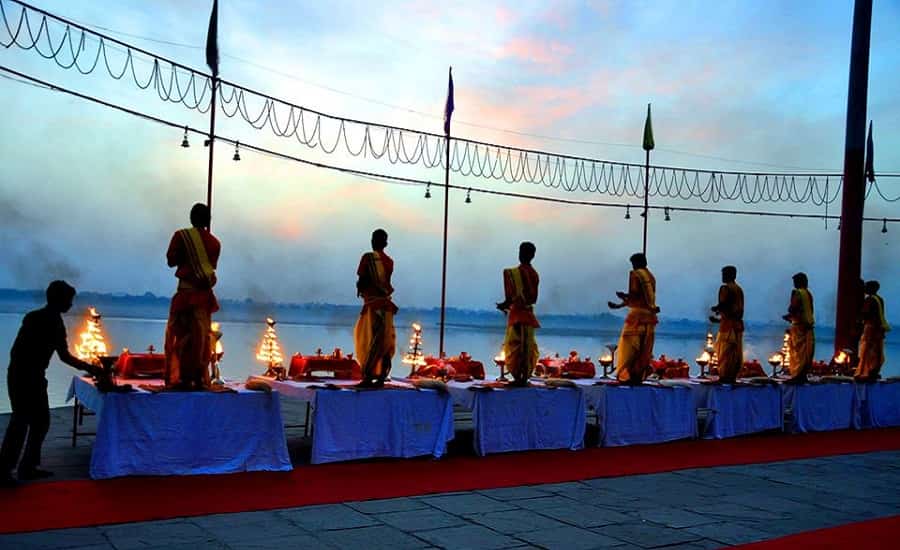
Assi Ghat is located at the southern region of Varanasi. Every year, scores of foreign students, tourists, researchers, and photographers visit this Ghat. Assi Ghat holds an important position among the Ghats, especially during festivals and ceremonies. It is usually visited by about 300 people per hour, but during special occasions, this number increases to more than 2,500. The accommodation capacity of the Ghat is 22,500, and sometimes it exceeds that during events like Shivratri. Many Israeli soldiers, after completing their mandatory military service, visit Assi Ghat, as they are connected with the Jewish community in the area.
Assi Ghat is located at the confluence of the Assi River and the Ganges. It is the first Ghat if you begin your journey from the southern part of the city towards Manikarnika. It is believed that a dip in the Assi River is mandatory for every visitor before they perform their rituals. Lord Asisangameshvara, the deity of the Assi confluence, is enshrined here in a marble-covered shrine. Pilgrims also visit the nearby Lolark Kund, a tank believed to be related to the sun, during the Lolark fair, which is held during Buddha Purnima.
Assi Ghat is an important part of the Panch Tirth Yatra, the five pilgrimage Ghats that are traditionally visited in sequence.
